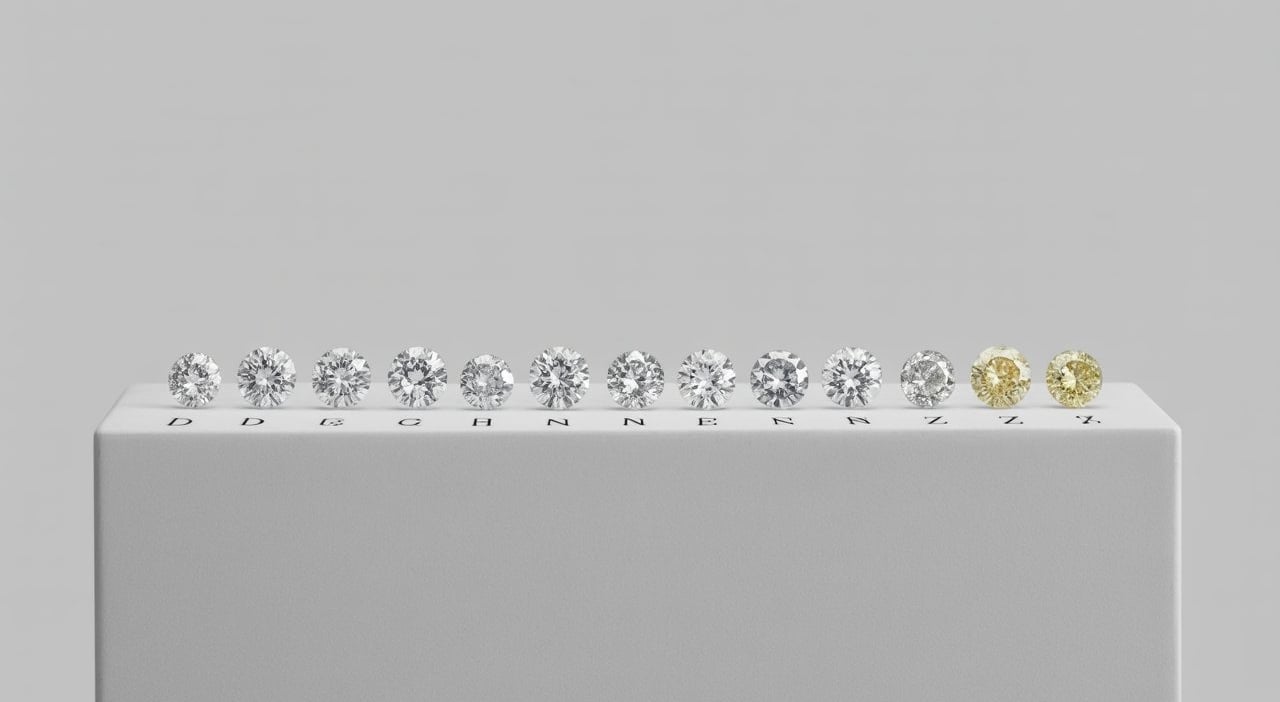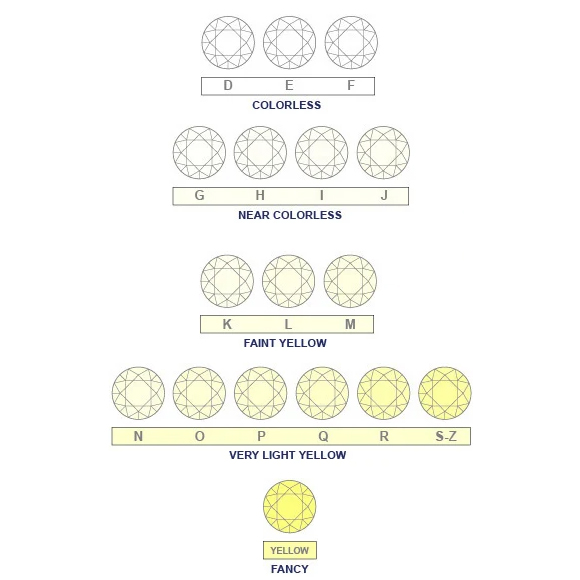Welcome to SHAMBH!
Diamond Color Grading: The Ultimate Guide to Choosing Your Perfect Diamond Shade
SHAMBH
9/5/20255 min read


At SHAMBH, where luxury meets innovation, every diamond we craft tells a story of power, memories, and timeless elegance. As a premier manufacturer of natural and lab-grown diamonds and exquisite diamond jewelry, we understand that choosing the exact diamond color is essential to not only the beauty but the legacy of your piece. Whether for B2B partners seeking exceptional quality or discerning customers desiring perfection, understanding diamond color grading empowers you to make informed, confident choices that reflect sophistication and individuality.
This comprehensive guide dives deep into the world of diamond color grading—explaining the industry standards, what the grades mean for your jewelry, and why SHAMBH stands apart as a trusted source for both natural and lab-created brilliance.
What is Diamond Color Grading? Why Does It Matter?
Diamond color grading is a meticulous process that evaluates the presence or absence of color within a diamond. Unlike fancy colored diamonds (which are prized for their vivid hues), the standard color grading scale assesses white or colorless diamonds, focusing on how closely a diamond approaches total colorlessness.
The less color a diamond shows, the higher its quality and value. The subtle color nuances, often invisible to the untrained eye, dramatically impact brilliance, sparkle, and the diamond’s overall appeal.
For brands like SHAMBH, representing luxury and refined craftsmanship, selecting the ideal diamond color guarantees a masterpiece that shimmers with unmatched clarity and elegance.
The GIA Color Grading Scale: Universal and Authoritative
The most widely accepted diamond color grading system is developed by the Gemological Institute of America (GIA). It grades diamonds on a scale ranging from D (colorless) to Z (light yellow or brown tint).
Why does the GIA scale start at D?
Before the GIA standardized the scale, color grading was inconsistent, using various letters or descriptive terms. To create a fresh, authoritative ranking free from confusion, GIA began with the letter D, which does not correspond to any previous system.
The Color Scale Breakdown:
D-F: Colorless
Diamonds in this range are completely or almost completely devoid of color, offering exceptional brilliance. These are the top-tier grades and rarest finds.G-J: Near Colorless
Diamonds here show tiny traces of color, often imperceptible without magnification. They offer fantastic value, appearing visually very similar to colorless diamonds when set in jewelry.K-M: Faint Color
At this level, a slight yellow or brown tint is visible, especially in larger diamonds. These stones have warm, characterful hues but are considered lower in color quality.N-R: Very Light Color
Diamonds with noticeable color, which affects their brilliance. These are typically more affordable but less sought after for fine jewelry.S-Z: Light Color
Diamonds display obvious color tones of yellow or brown. They are often used in fashion jewelry or less traditional designs.
Understanding Diamond Color in Lab-Grown vs. Natural Diamonds
At SHAMBH, your choice between a natural diamond or a lab-grown diamond does not compromise on color or quality. Both types are graded using the same GIA scale, ensuring transparency and trustworthiness.
Natural Diamonds are born deep within the earth over millions of years, with color influenced by trace elements and natural conditions.
Lab-Grown Diamonds share the chemical, physical, and optical properties of natural stones but are cultivated in controlled environments that allow for precise color control.
Lab-grown diamonds have made the luxury market more accessible, delivering the same exceptional sparkle and color purity as natural diamonds but often at better price points and with ethical sourcing benefits.
How Diamond Color Impacts Jewelry Appearance and Price
The subtlety of diamond color is a study in perception and precision. While higher color grades (D-F) command premium prices due to rarity, near-colorless grades (G-J) provide excellent visual appeal and are often chosen for engagement rings and fine jewelry.
Setting and Size Matter:
In smaller stones, differences between D and H grades are nearly invisible to the naked eye.
For larger diamonds, color becomes more apparent, making higher grades preferable for maximized brilliance.
Jewelry settings (such as yellow gold vs. white gold) can affect the perceived color of the stone, enabling more design flexibility.
The Art and Science of Measuring Diamond Color
Color grading is done by expert gemologists in a controlled light environment, viewing diamonds face down (table facing down) to accurately assess body color excluding light reflections. Diamonds are compared against master stones of known color values.
This exacting process ensures the diamond’s color grade is consistent and reliable, offering a trusted benchmark for consumers and jewelers worldwide.
Choosing the Right Diamond Color for You: Expert Tips from SHAMBH
Determine your budget and priorities:
If budget allows, opt for a colorless diamond (D-F). If you prefer value without visual sacrifice, near-colorless grades (G-J) are excellent.Match the setting to the diamond color:
Yellow gold can mask faint color, making it suitable for lower color grades, while platinum and white gold best complement colorless diamonds.Consider diamond size:
Larger diamonds reveal more color, so choose higher grades for larger stones.Think about personal taste and style:
Warm tones in faintly colored diamonds can create unique, vintage aesthetics.
Why SHAMBH is the Trusted Name in Diamond Color Excellence
Uncompromising Quality: Every diamond, natural or lab-grown, undergoes stringent grading by certified gemologists.
Sustainability & Innovation: SHAMBH leads in lab diamond manufacturing, marrying luxury with responsible sourcing.
Tailored Solutions: For B2B clients and individual patrons, SHAMBH offers flexible options, ensuring the right color and quality in any setting.
Legacy of Trust: Our diamonds embody power, elegance, and memories, making every piece an heirloom in the making.
Frequently Asked Questions about Diamond Color
Q1: Can I see the difference between D, E, and F color diamonds?
To the untrained eye, differences between D, E, and F are nearly impossible to distinguish without professional tools. These grades are all considered colorless and top quality.
Q2: Are lab-grown diamonds available in all color grades?
Yes, lab-grown diamonds at SHAMBH are available across the entire GIA color scale, enabling you to select the perfect balance of budget and brilliance.
Q3: How important is diamond color compared to other 4Cs?
Color profoundly impacts beauty and value, but cut quality often plays the biggest role in sparkle. SHAMBH ensures excellence across all parameters for unmatched brilliance.
Final Thoughts: Illuminate Your Story with the Perfect Diamond Color
Choosing a diamond color isn’t just about aesthetics—it’s about capturing a moment, a memory, and a power that lasts forever. At SHAMBH, we fuse innovation with tradition, luxury with responsibility, and craftsmanship with precision.
Explore our curated collections of natural and lab-grown diamond jewelry designed to fit your personality, style, and the legacy you wish to create.
Embrace the beauty of colorless brilliance or the warm allure of unique hues, but always shine with SHAMBH—the mark of true luxury and timeless memories.
If desired, SHAMBH can provide bespoke consultations to help you find the ideal diamond shade for any jewelry piece or business partnership.


Elegance
Discover our exquisite diamond jewelry collections today.
Get in Touch
Subscribe
support@shambh.com
+91 96012 68918
© Shambh 2025. All rights reserved.
